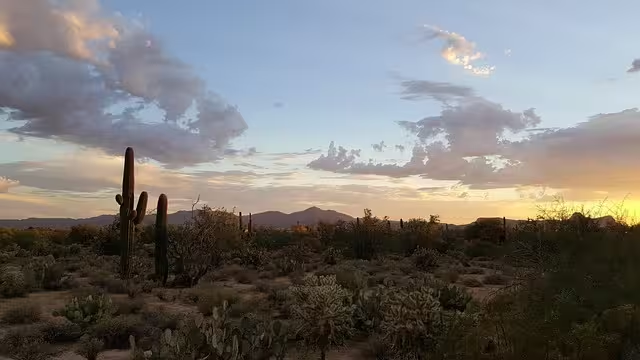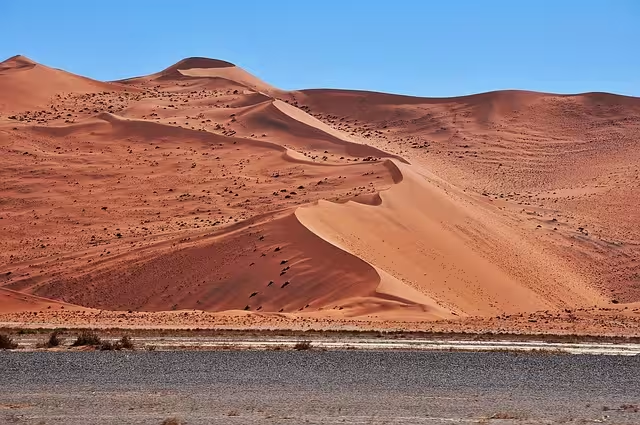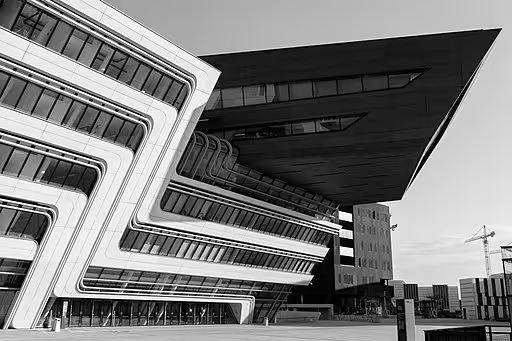There is an appealing psychological resonance found within vast, open landscapes—a quiet sense of clarity that settles in the human mind when faced with an uncluttered horizon. The desert, often perceived as a space of emptiness, is in reality a complex and dynamic system of immense beauty. Its perceived simplicity is a veil for an intricate world of texture, pattern, and form sculpted by the patient, persistent forces of nature. To look upon a desert is to experience the core biophilic principle of “prospect”—our innate satisfaction in being able to see far and wide, a feeling rooted deep in our evolutionary history.
This article serves to explore the fundamental components of these powerful desert landscape aesthetics, with a specific focus on the elegant physics and visual poetry of sand dune effects. From there, we will build a practical and functional way to translate these timeless natural elements into effective, resonant, and user-centric digital experiences, transforming a screen from a simple interface into a place of subtle, natural harmony.
Table of Contents
The Psychology of Arid Spaces: Why We’re Drawn to Desert Aesthetics

Before one can effectively apply a design language, it is crucial to understand the source of its power. The appeal of the desert is not arbitrary; it is connected to deep-seated psychological preferences that have been shaped over millennia. By understanding why these landscapes feel calming, inspiring, or beautiful, we can borrow their elements with intention and purpose.
Biophilia Hypothesis: An Innate Connection
The Biophilia Hypothesis, a term popularized by biologist E.O. Wilson, posits that humans have an inherent tendency to seek connections with nature and other forms of life. This isn’t just about lush forests and flowing rivers—it extends to every type of natural environment, including arid ones. Deserts tap into two specific biophilic responses with incredible efficiency: prospect and refuge.
- Prospect: As mentioned, prospect is the unimpeded view over a distance. It gives us a feeling of control and safety, as we can see opportunities or dangers from afar. In a digital context, a design that offers high prospect—plenty of “white space,” clear navigation, and an unobstructed view of the main content—makes a user feel comfortable and in command of their experience.
- Refuge: While the desert is open, it is also filled with subtle places of refuge—the shade of a large rock, a small alcove in a canyon wall, or the leeward side of a dune. This duality of vast openness paired with secure, sheltered spaces is deeply comforting. In web design, this can be translated by creating a clean, open layout (prospect) that also contains clearly defined content blocks, buttons, or images that feel like safe, stable places for the eye to rest (refuge).
Minimalism and Reduced Cognitive Load
Our brains are constantly processing information. When an environment is overly complex, crowded, or chaotic, it creates a high “cognitive load”—essentially, our brains have to work harder just to make sense of what we’re seeing. This can lead to stress, fatigue, and confusion.
The desert is the ultimate minimalist landscape. It strips away the non-essential, leaving only form, light, and texture. This visual simplicity dramatically lowers our cognitive load. We are not bombarded with competing stimuli. This allows our minds to relax, focus, and wander more freely.
This principle is a cornerstone of modern user interface (UI) and user experience (UX) design. A minimalist website that uses desert aesthetics—with its generous use of negative space, limited color palette, and focus on essential elements—does the same thing for a user. It removes the mental clutter, making the website feel intuitive, calming, and professional. It allows the user to focus on the message or task at hand without distraction.
The Psychological Impact of a Desert Color Palette
Color is a powerful tool that communicates emotion and meaning faster than words. The color palette of the desert is both subtle and exciting, consisting of warm, earthy tones that resonate with feelings of stability, warmth, and authenticity.
- Ochre, Terracotta, and Sienna: These reddish-brown and orange hues are associated with earth, clay, and handcrafted materials. They feel grounded, warm, and human.
- Sand, Beige, and Ecru: These soft, muted neutrals provide a sense of calm and spaciousness. They are excellent background colors that do not compete for attention, allowing other elements to stand out.
- Charcoal and Deep Brown: Representing shadow and rock, these dark tones provide necessary contrast, creating depth and making lighter elements feel more vibrant.
- Pale Sky Blue: Often used as an accent, this color provides a touch of coolness and openness, balancing the warmth of the earth tones and evoking the vast desert sky.
Using this palette in a design can instantly make it feel more organic, trustworthy, and serene—qualities that are highly valuable for brands in wellness, luxury, travel, and craftsmanship sectors.
Deconstructing the Visual Language of the Desert

To use desert aesthetics effectively, we must first learn to see the desert as a designer would—breaking it down into its fundamental visual components. These are the building blocks we can use to construct our digital landscapes.
Form and Shape
The shapes of the desert are sculpted by wind and water over eons, resulting in forms that are inherently soft, organic, and pleasing to the human eye.
- Undulating Lines & Sinuous Curves: The most dominant feature of a sand dune is its soft, flowing curve—the “line of beauty” or S-curve. These lines are gentle and predictable, guiding the eye effortlessly across a composition. In web design, these curves can be used as background elements, section dividers, or even to guide the user’s path through a page layout, creating a visual journey that feels natural and fluid.
- Fractal Patterns: Fractals are complex patterns where a similar shape repeats at smaller and smaller scales. Nature is filled with them—the branching of a cactus, the pattern of cracks in dry earth, the shape of a lightning strike. These patterns are visually interesting because they feel both orderly and complex at the same time. Incorporating subtle fractal textures into backgrounds or graphics can add a layer of organic depth and realism to a design.
- Negative Space: In the desert, the sky is not just an empty backdrop; it is a powerful design element that defines the horizon and gives scale to the landscape. This is “negative space”—the area around and between the subjects of an image. In web design, negative space (often called white space) is crucial. It gives elements room to breathe, reduces clutter, improves readability, and directs the user’s focus to the most important content. The desert teaches us that what you don’t include is just as important as what you do.
Texture and Materiality
Texture adds a tactile quality to a visual design, making it feel more real and engaging. The desert offers a rich library of textures to draw from.
- Granular Surfaces: The fine, grainy texture of sand is a key element. In digital design, this can be simulated with a subtle noise or grain overlay on images or colored backgrounds. This simple effect can break up flat, digital-looking color blocks and give them a more organic, tangible feel.
- Rough & Smooth Contrasts: The desert is a place of contrast—the silky smooth crest of a dune meeting the coarse, gravely ground at its base. This interplay of textures is visually dynamic. In UI design, this can be translated by pairing a smooth, clean button with a slightly textured background, or a crisp, sharp font on a soft, grainy image. This contrast helps elements stand out and creates a richer visual experience.
- Patina & Weathering: Desert rocks and soil show the effects of time—they are weathered, faded, and layered. This “patina” suggests history, authenticity, and endurance. Digitally, this can be achieved with subtle color variations, faded overlays, or multi-toned gradients that give a design a sense of depth and character beyond a simple, flat color.
Light and Shadow
Light in the desert is a powerful force that transforms the landscape throughout the day, and understanding it is key to creating mood and depth in design.
- High-Contrast Lighting: At midday, the sun is directly overhead, creating short, dark, and sharply defined shadows. This creates a high-contrast look that is dramatic, bold, and clear. This style can be used in design to create a strong, confident aesthetic with crisp typography and clearly defined sections.
- Soft, Diffuse Light: During the “golden hours” of sunrise and sunset, the sun is low on the horizon. The light is warm, soft, and casts long, gentle shadows that beautifully define the shape and curve of the dunes. This type of lighting creates a mood that is calm, serene, and emotional. In web design, this can be replicated with soft gradients, long, subtle drop shadows, and a warm color palette to create an inviting and peaceful user experience.
The Physics and Form of Sand Dune Effects
To truly master sand dune effects, it helps to look beyond their beauty and understand the science that creates them. This knowledge allows for a more authentic and intentional application in design. The formation of dunes is the result of Aeolian processes—the work of the wind as it transports, erodes, and deposits sand. The shape of a dune is a direct reflection of the wind that created it.
Typology of Dunes: A Designer’s Guide
Different wind patterns create different types of dunes, each with its own unique shape and character. Each shape has a different design implication.
- Barchan (Crescentic) Dunes: These are crescent-shaped dunes with a gentle slope on the side facing the wind and a much steeper “slip face” on the downwind side. The “horns” of the crescent point in the direction the wind is blowing.
- Design Implication: Barchan dunes inherently suggest movement and direction. Their shape is perfect for “next” or “continue” buttons, progress bar indicators, or animated elements that guide a user forward through a process. They provide a natural, organic arrow.
- Linear or Seif Dunes: These are long, straight, or slightly sinuous ridges of sand that can stretch for many miles. They form in areas where the wind comes from two consistent, converging directions.
- Design Implication: Linear dunes are masters of the leading line. They create powerful visual paths that can be used to direct the user’s eye towards a specific focal point, like a call-to-action button or a key piece of information. They are also excellent for creating strong, elegant section dividers.
- Star Dunes: These are radially symmetrical, pyramidal mounds of sand with three or more arms that radiate from a central peak. They form in places where the wind direction is variable and comes from many directions. The great dunes of the Namib Desert are often of this type.
- Design Implication: Star dunes represent stability, complexity, and a central focal point. They are excellent for hero images or icons that need to feel multi-faceted, stable, and important—like a logo for a company with multiple divisions or a central navigation hub.
- Parabolic Dunes: Also called blowout dunes, these are U-shaped. Unlike Barchan dunes, their arms point into the wind. They are often found in coastal areas where vegetation helps anchor the arms of the dune.
- Design Implication: The U-shape of a parabolic dune creates a sense of enclosure and focus. It naturally frames whatever is inside it. This shape can be used to frame important content, testimonials, or images, drawing the user’s attention inward.
Digital Translation: Applying Desert Aesthetics to Web Design

Now we arrive at the practical application—the bridge between the natural world and the digital canvas. Here is how to translate the principles we’ve discussed into code and composition for websites.
Layout and Composition
Before writing a single line of code, the layout must reflect the desert’s principles of space and focus.
- Embrace Asymmetry and Negative Space: Avoid rigidly centered, symmetrical layouts. Instead, try an asymmetrical layout where the main content is balanced by a large area of negative space. This mimics the feeling of a vast desert landscape with a single, interesting focal point (like a solitary rock formation), making the main content feel more important and less cluttered.
- The Horizon Line and the Rule of Thirds: Use the “Rule of Thirds”—a principle where a composition is divided into a 3×3 grid. Placing key elements along these lines or at their intersections creates a more balanced and natural-looking design. Think of a strong horizontal section divider as your website’s “horizon line” and place it on either the top or bottom third line, not directly in the middle.
Simulating Sand Dune Effects with CSS
Cascading Style Sheets (CSS) is the language used to style web pages. With modern CSS, we can create surprisingly realistic and beautiful desert effects without needing to use large image files, which helps keep websites fast.
- Color Gradients for Soft Light: A dune’s surface is never a single, flat color. It’s a smooth gradient of light and shadow. The CSS
linear-gradient()function is perfect for this. By creating a subtle fade from a lighter shade of sand to a slightly darker one, you can mimic the soft curve of a dune.- Example:
background: linear-gradient(170deg, #EADDCA 0%, #D8C6B1 100%);This simple line of code creates a soft, directional light effect.
- Example:
- Layered
box-shadowfor Ridges: The CSSbox-shadowproperty is typically used to put a simple drop shadow behind an element. However, you can apply multiple shadows to the same element. By layering several soft, differently colored, and differently positioned shadows, you can build up the appearance of soft, overlapping dune ridges. This is a powerful technique for creating depth on backgrounds or large panels. - Texture Overlays for a Granular Feel: To get that sandy texture, create a small, semi-transparent image file with a noise or grain pattern. Then, apply it as a repeating background image on top of your color or gradient.
- Example:
background-image: url('noise-texture.png');This subtle layer can transform a flat digital color into something that feels more tangible.
- Example:
- SVG Filters for Organic Texture: For more advanced effects, Scalable Vector Graphics (SVG) offer filters that can manipulate graphics in complex ways. The
<feTurbulence>filter, for instance, can be used to generate a random, cloud-like pattern that, when styled correctly, can produce incredibly realistic and organic sand or stone textures that are unique every time.
Interactive Dune Effects with JavaScript
For a truly dynamic experience, JavaScript can be used to create effects that respond to the user.
- Particle Systems: Using a JavaScript library like Three.js (for 3D) or p5.js (for 2D), developers can create “particle systems”—thousands of tiny dots that can be programmed to behave like sand grains. You can make them swirl when the user moves their mouse, blow across the screen like wind, or form into different shapes. This creates a deeply engaging and memorable hero section for a website.
- Generative Art: JavaScript can also be used for “generative art”—using algorithms to create unique visual designs. A script could be written to generate a new, unique desert landscape or dune formation every time a user visits the page, ensuring the design always feels fresh while staying within the established aesthetic.
- On-Scroll Animations: As a user scrolls down a page, JavaScript can subtly change the CSS gradients to mimic the light shifting across the landscape, or animate SVG paths to make dune lines appear to drift and reform. This adds a layer of narrative and discovery to the simple act of scrolling.
Case Studies and Inspirations

The principles of desert design are not confined to the web. They have been masterfully explored in other fields, offering rich inspiration.
- Architecture: Zaha Hadid and Frank Lloyd Wright: The late architect Zaha Hadid was renowned for her use of sweeping, fluid forms that look like they were shaped by natural forces—her buildings often resemble futuristic dunes or wind-carved canyons. In contrast, Frank Lloyd Wright’s Taliesin West in the Sonoran Desert is a masterclass in integration, using local rock and desert-inspired angles to make the structure feel like it grew out of the landscape itself.
- Art: Georgia O’Keeffe: The painter Georgia O’Keeffe moved to New Mexico and spent decades capturing the essence of the desert. She focused on its simplified forms, its subtle color palette, and the interplay of bone, rock, and sky. Her work teaches us how to see the beauty in simplicity and to find powerful compositions in the natural world.
- Web Design: Imagine a website for a high-end Moroccan travel agency. The background might feature a slow-moving video of the Sahara at sunset. The buttons could be the warm terracotta color of desert clay, and the typography could be an elegant serif font that feels both classic and timeless. Or consider a skincare brand that uses desert botanicals. Its website could use a clean, sand-colored background with a subtle grain texture, high-quality macro photography of its products, and gentle, curved section dividers that mimic the soft lines of a dune. These designs succeed because they don’t just show you the desert—they make you feel its calm, its warmth, and its authenticity.
Your Questions Answered
- Q1: What is the core principle of desert landscape aesthetics?
- Answer: The core principle is the strategic use of minimalism, natural patterns, and negative space to create a sense of calm, focus, and connection to a vast, organic environment. It prioritizes texture, form, and the interplay of light and shadow over dense ornamentation.
- Q2: How can I create a desert-inspired color palette for my website?
- Answer: Start with a base of warm neutrals like sand, beige, and ecru. Add depth with earth tones such as terracotta, sienna, and ochre. Use a deep charcoal or near-black for contrast, mimicking shadows, and a pale sky blue or soft white as an accent color for a touch of coolness and space.
- Q3: Is a desert aesthetic suitable for e-commerce websites?
- Answer: Yes, it is exceptionally suitable, particularly for luxury goods, wellness products, or brands emphasizing craftsmanship and natural ingredients. The minimalist approach reduces clutter, allowing the products to be the primary focus, while the aesthetic itself evokes a sense of quality, authenticity, and timelessness that can elevate a brand’s perceived value.
Conclusion: The Enduring Value of Natural Forms in a Digital World
In an increasingly digital and often chaotic world, the human need for connection to nature has never been stronger. Biophilic design is the bridge that satisfies this need. By deconstructing the desert landscape aesthetics and understanding the mechanics of sand dune effects, we gain more than just a new visual style. We gain a methodology for creating digital spaces that are fundamentally more human.
The desert teaches us the power of subtraction, the beauty of subtle texture, and the quiet authority of open space. Translating these principles to a screen—through thoughtful layout, intelligent use of color and light, and elegant code—allows us to build websites and applications that are not just functional, but restorative. They reduce cognitive load, foster a sense of calm, and communicate their message with a quiet confidence that stands out in a noisy digital landscape. The desert, in its elegant and timeless simplicity, offers a masterclass in design, and we have only just begun to listen.
